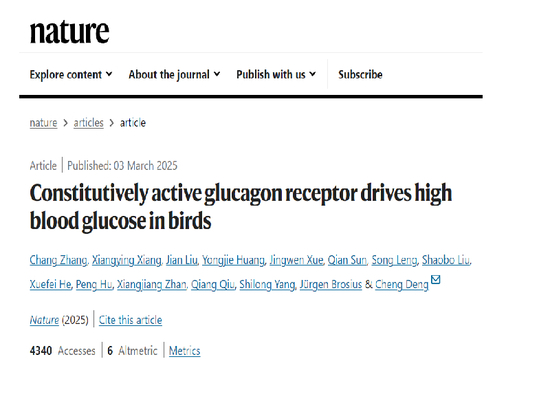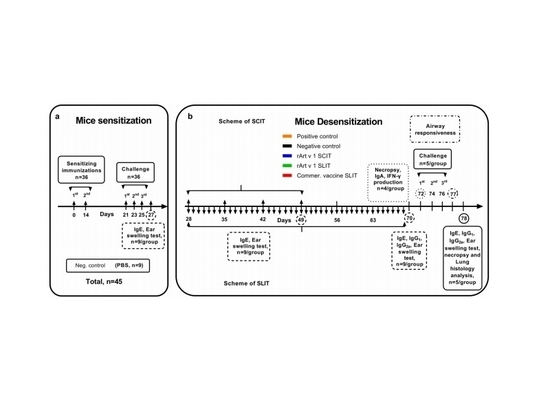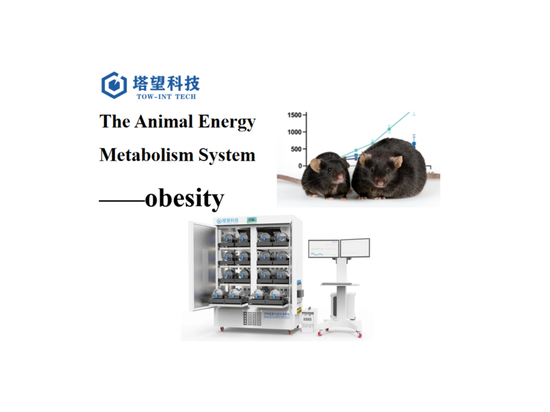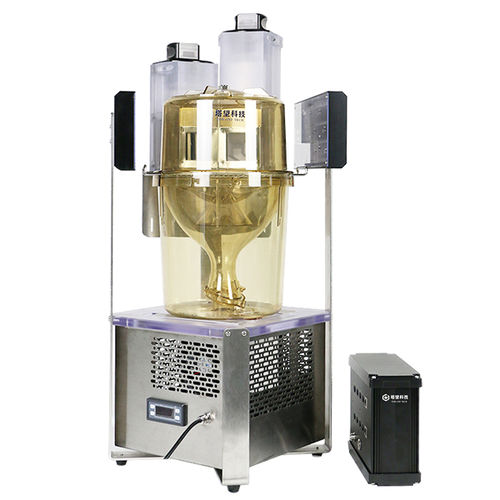
#Industry News
How excess corticosterone affects the metabolic rates
male and female C57BL/6J mice
Introduction
Glucocorticoids are crucial for regulating metabolic processes and have significant applications in medical treatment. However, excessive glucocorticoids are known to cause negative metabolic effects, including hyperglycemia, muscle atrophy, and fat accumulation, ultimately leading to Cushing's syndrome. The impact of glucocorticoids on energy metabolism and metabolic rates remains unclear and warrants investigation in both male and female mice.
Research Methods
A total of 24 male and 24 female C57BL/6J mice were randomly assigned to either the corticosterone group (100 mg/L, approximately 300 μg/day) or the vehicle control group. The mice had ad libitum access to drinking water and were fed a standard diet throughout the 3-week treatment period. In the final week of treatment, the mice were placed in an animal energy metabolism system for indirect calorimetry assessment to evaluate their metabolic rates.
Research Results
After corticosterone intervention, the mice exhibited typical glucocorticoid excess phenotypes. However, compared to male mice, female mice showed significantly greater fat accumulation and weight gain. During the day, energy expenditure (EE, 25±5.9%), oxygen consumption (21.7±10.0%), and carbon dioxide production (36.4±14.3%) were increased in female corticosterone-treated mice compared to the control group, while no such changes were observed in male mice. However, corticosterone treatment significantly elevated the respiratory exchange ratio (RER) in both male (10.7±5.7%) and female (11.8±7.0%) mice during the day to approximately 1.
At night, when the mice were naturally more active and energy efficiency increased, female corticosterone-treated mice no longer showed increased energy efficiency, oxygen consumption, or carbon dioxide production compared to the control group. However, their RER remained significantly higher (7.6±4.8%), while the RER of male mice was moderately elevated (3.2±2.6%), with both sexes maintaining RER values close to or above 1.
Corticosterone-treated mice were in a state of hyperphagia and polydipsia throughout the treatment, with significantly higher food intake during both day and night compared to the control group, with peak intake occurring at night. Subsequent metabolomic analysis of tissue samples (skeletal muscle, liver, and gonadal fat) revealed significant treatment and sex differences.
Research Conclusion
These findings provide further insights into the metabolic consequences of glucocorticoid excess in male and female mice. While both sexes exhibit alterations in energy metabolism and metabolic rates (especially during the day), the effects of glucocorticoid excess may be more pronounced in female mice. Future research could investigate whether these changes are solely due to increased animal activity, heightened food and water intake, or whether other mechanisms are involved. Additionally, further experiments could explore whether 11β-HSD1 knockout (KO) can prevent these changes, as it has been shown to block other negative metabolic effects associated with glucocorticoid excess, potentially advancing the development of new therapeutic drugs.
The related instrument solutions provided by Tow-Int Tech
The animal energy metabolism monitoring system developed by Tow-Int Tech is a highly flexible and modular platform. With a single software, it can simultaneously control different functional modules within the animal housing cages, including:
Respiratory and Metabolic Monitoring Module
Environmental Temperature Control Module
Diet and Weight Monitoring Module
Urine/Feces Monitoring Module
Autonomous Activity and Training Module
Learning and Memory Monitoring Module
Physiological Telemetry Monitoring Module
This modular system allows for comprehensive and precise monitoring of various physiological parameters, providing valuable data for metabolic studies and research.
Animal Engergy Metabolism Monitoring System
It can accurately measure oxygen consumption, CO2 production, respiratory metabolic rate, etc. It is equipped with 4/8/16 channels, each with an independent controller, which can be used independently or flexibly expanded, plug-and-play. (Chambers can be customized according to experimental needs).
Airflow Drying Function: The airflow drying function ensures that the sample gas composition is not affected by humidity or other adsorptive materials, ensuring the accuracy of gas measurement data.
Digital Flow Control Valve: Controls gas flow with a precision of 0.01 L/min.
Reference Gas Detection: Can monitor the O2 and CO2 content in the reference air of the experimental environment.
CO2 Measurement: Measurement range: 0-10,000 ppm, measurement resolution ≤0.0001%.
Oxygen Measurement: Resolution: 0.0001%, measurement range: 0.1-25%.
Data Acquisition and Analysis System (Software): Includes an integrated data collector and software, connected to a computer via USB. The data is displayed in an integrated format and can provide trend curves for various indicators.
The Animal Respiratory Metabolism Monitoring System is a simplified version of the Animal Energy Metabolism Monitoring System (HOME CAGES). It is primarily used to monitor parameters such as oxygen consumption, CO2 production, and respiratory metabolic rate, serving as a standard device for animal energy metabolism measurement.
Animal Respiratory Metabolism Monitoring System
It can accurately measure oxygen consumption, CO2 production, respiratory metabolic rate, and other related parameters. Equipped with 4/8/16 channels, each with an independent controller, it can be used independently or flexibly expanded, plug-and-play. (Chambers can be customized according to experimental needs).
Airflow Drying Function: Ensures that the composition of the sample gases is not affected by humidity or other adsorptive materials, guaranteeing the accuracy of gas measurement data.
Digital Flow Control Valve: Controls the gas flow with an accuracy of 0.01 L/min.
Reference Gas Detection: Can monitor the O2 and CO2 content in the reference air of the experimental environment.
CO2 Measurement:
Measurement range: 0-10,000 ppm
Measurement resolution: ≤0.0001%
Oxygen Measurement:
Measurement range: 0.1-25%
Resolution: 0.0001%
Data Acquisition and Analysis System (Software):
Includes an integrated data collector and software, connected to a computer via USB. The data is displayed in an integrated format, providing trend curves for various indicators.
The Animal Metabolism Monitoring System is a comprehensive system designed to monitor animal metabolism parameters. It can continuously track food intake, water consumption, and activity levels in real-time. Additionally, it can be optionally configured to monitor oxygen consumption, CO2 production, and respiratory metabolic rate, among other parameters.
The system is capable of separating and collecting animal feces and urine. It also allows for real-time monitoring of feces and urine weight to analyze the animal's metabolic status.
The Animal Metabolism Monitoring System mainly consists of the following components:
Data Acquisition and Controller
Metabolic Cages
Environmental Cabinet
Computer and Software
This system provides an integrated solution for studying various aspects of animal metabolism, supporting a wide range of research applications in metabolic, pharmacological, and physiological studies.
Animal Metabolism Monitoring System
The Animal Metabolic Cage and Feces/Urine Collection Tubes are made from high-quality PSU (Polysulfone) material with a high surface finish, effectively preventing animal feces and urine from sticking to the walls and ensuring no residue is left behind.
Key Features:
Easy-to-Remove Water and Food Containers
The water and food containers can be easily removed without interrupting the experiment, ensuring no disturbance to the animals while feeding or adding water.
Leak-Proof Water Recovery Design
The water containers feature a leak-proof design to enhance the accuracy of water intake measurements and avoid contamination of urine collection.
Modular Design
The system is highly flexible with a modular design, allowing for functional adjustments and expansion based on experimental requirements.
Independent Controllers and Flexible Channel Expansion
The system is equipped with independent controllers, and the number of channels can be easily expanded, providing customizable configurations for various experiments.
Feces and Urine Collection with Cooling Module
The system includes a cooling module for feces and urine collection, enabling the freezing and preservation of samples for future analysis.
This setup provides a streamlined, non-invasive, and highly accurate solution for monitoring animal metabolism, facilitating high-quality data collection with minimal disruption to the animals.
Contact us now!
We are committed to making your research easier, more accurate, and more efficient and helping you build confidence in your data! We have provided services for a large number of customers and have rich experiences in offering customized, professional solutions according to your needs.







